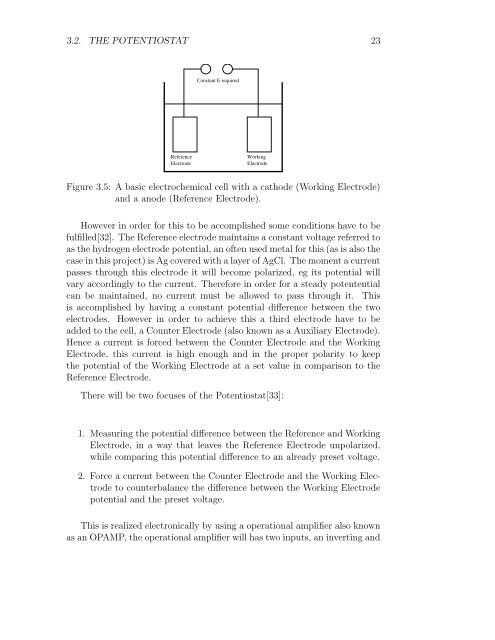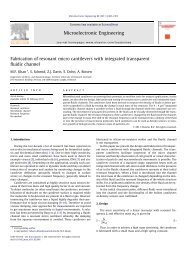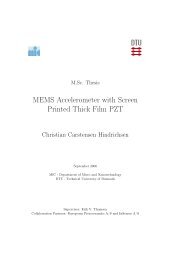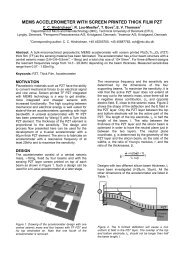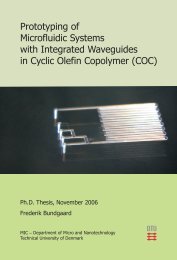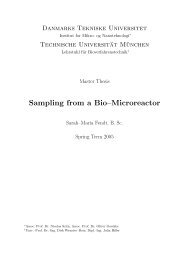Development of a Oxygen Sensor for Marine ... - DTU Nanotech
Development of a Oxygen Sensor for Marine ... - DTU Nanotech
Development of a Oxygen Sensor for Marine ... - DTU Nanotech
Create successful ePaper yourself
Turn your PDF publications into a flip-book with our unique Google optimized e-Paper software.
3.2. THE POTENTIOSTAT 23<br />
Reference<br />
Electrode<br />
Constant E required<br />
Working<br />
Electrode<br />
Figure 3.5: A basic electrochemical cell with a cathode (Working Electrode)<br />
and a anode (Reference Electrode).<br />
However in order <strong>for</strong> this to be accomplished some conditions have to be<br />
fulfilled[32]. The Reference electrode maintains a constant voltage referred to<br />
as the hydrogen electrode potential, an <strong>of</strong>ten used metal <strong>for</strong> this (as is also the<br />
case in this project) is Ag covered with a layer <strong>of</strong> AgCl. The moment a current<br />
passes through this electrode it will become polarized, eg its potential will<br />
vary accordingly to the current. There<strong>for</strong>e in order <strong>for</strong> a steady potentential<br />
can be maintained, no current must be allowed to pass through it. This<br />
is accomplished by having a constant potential difference between the two<br />
electrodes. However in order to achieve this a third electrode have to be<br />
added to the cell, a Counter Electrode (also known as a Auxiliary Electrode).<br />
Hence a current is <strong>for</strong>ced between the Counter Electrode and the Working<br />
Electrode, this current is high enough and in the proper polarity to keep<br />
the potential <strong>of</strong> the Working Electrode at a set value in comparison to the<br />
Reference Electrode.<br />
There will be two focuses <strong>of</strong> the Potentiostat[33]:<br />
1. Measuring the potential difference between the Reference and Working<br />
Electrode, in a way that leaves the Reference Electrode unpolarized,<br />
while comparing this potential difference to an already preset voltage.<br />
2. Force a current between the Counter Electrode and the Working Electrode<br />
to counterbalance the difference between the Working Electrode<br />
potential and the preset voltage.<br />
This is realized electronically by using a operational amplifier also known<br />
as an OPAMP, the operational amplifier will has two inputs, an inverting and


